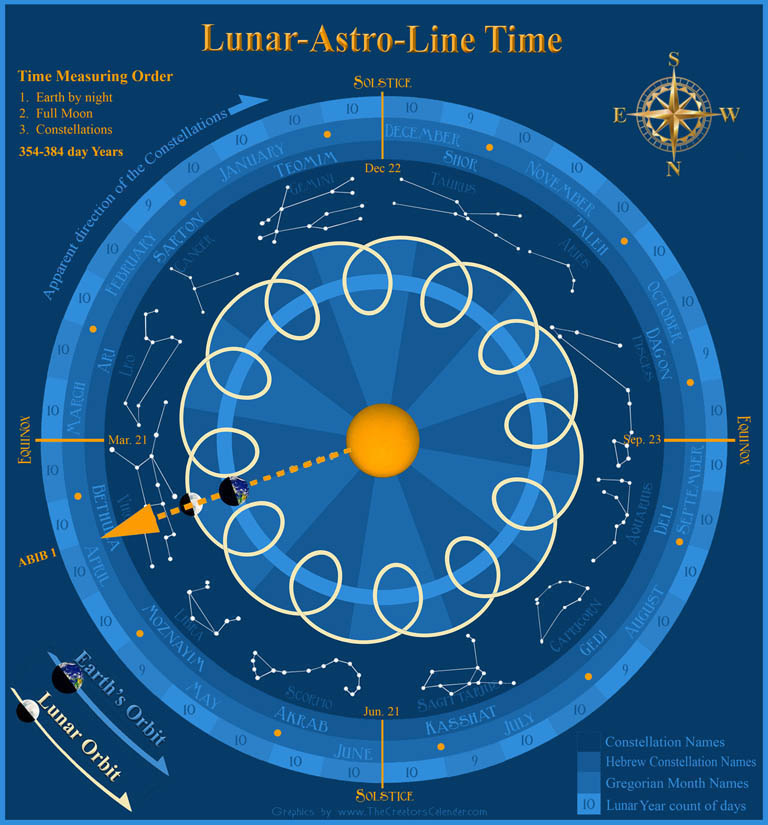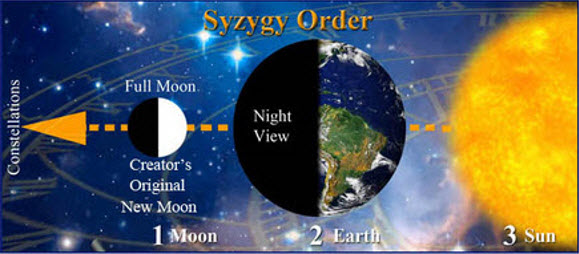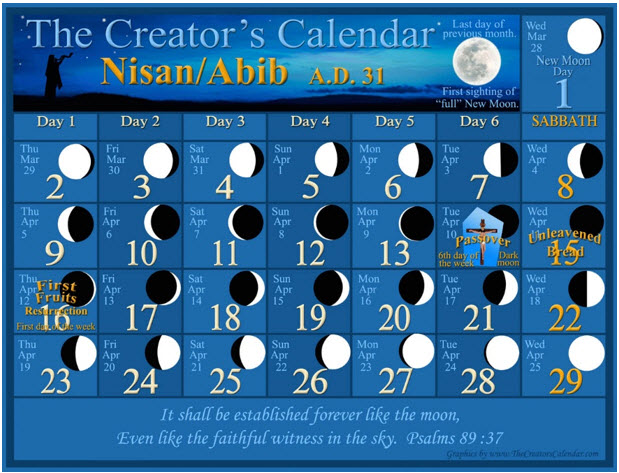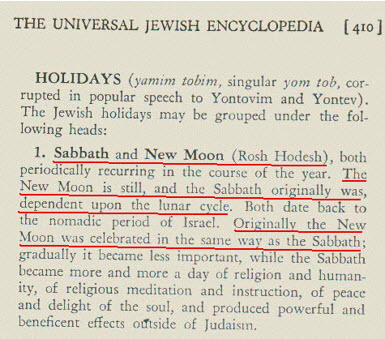Bible Study Guide – Know Your Creator’s Calendar
Bible Study Guide
Lesson Title: Know Your Creator’s Calendar
Prepared by Kerrie L. French and Samuel M. Kaara
Lesson 1: The Calendar of Scripture
Introduction:
In the beginning, our Creator, Yahuah Alahim/Elohim, together with His Son, Yahusha haMashiach, lovingly shared their eternally established calendar—their divine time-measuring model—with humanity. This sacred calendar, introduced in Genesis 1, was later expanded upon throughout Scripture. It serves as a symbol of our belonging to the Creator of the Universe, the one who formed TIME itself. (Exodus 31:13, Ezekiel 20:12, Ezekiel 20:20.)
Designed with perfect precision, it invites all His creation into His divine rhythm of life, aligning our soul temples with His so that we may honor and worship Him on His specifically appointed and ordained holy days. Unlike man-made time measuring systems, His calendar alone carries the time-centered PLAN OF SALVATION, the REMEDY FOR SIN, guiding all who seek faithfulness back to Him, ultimately restoring them to His eternal kingdom.
The Creator’s divine calendar has never changed; it has only been hidden, obscured by an illegitimate system born from rebellion and deception. This scheme was orchestrated by powerful men in high places who, in defiance of Yahuah’s law, sought to exalt themselves as masters over time. By rejecting the sacred timekeeping established in Scripture, they introduced a counterfeit calendar—one designed to sever creation from the celestial time markers, the sun, moon, and stars ordained by the Creator.
Historical records affirm that the oldest known calendars were astro-luni-solar, synchronized by the three-part harmony of the sun (solar), moon (luni), and stars (astro). Though scattered civilizations varied in their starting and ending points, this interconnected system was universally recognized by the ancient kingdoms of the world. Stunning Historical Evidence.
A defining feature of all lunar-based calendars is that years and months were measured by the appearance of the New Moon, the first day of a new lunar month, which was identified alongside a specific starry constellation by night when the sun is not present. Because of this, the ancients vigilantly watched the heavens, awaiting this celestial time marker to accurately begin their sacred years, months, and count of weeks and days.
Today, two major religious groups claiming Scripture as their guide hold opposing views on which lunar phase marks the authentic New Moon, the start of years and lunar months. Adding to this complexity, the Christian world has adopted the Roman-inspired Julian/Gregorian calendar, which has entirely severed itself from the moon, its phases, and its divinely ordained role in measuring time.
Most heathen and pagan nations keep some unique calendar for their non-Biblical sacred days but now utilize the popular Roman Gregorian calendar to harmonize with the world’s solar time measuring system for economic reasons. This departure from the Creator’s unique lunar model has not only obscured His original design upon which all prophecy is based but has also led to the loss of accurately locating for sacred worship, all His sacred New Moon Days, lunar seventh-day Sabbaths, and lunar appointed Feast Days. According to Scripture, every divinely appointed day is measured exclusively by the Creator’s lunar phases, counting from 1 – 29 or 30—from the New Moon, without exception. (Click on the image to enlarge it.)
Here’s how different religious groups define the New Moon today:
- Rabbinical Jews recognize the dark conjunction phase as their New Moon, but only for locating lunar Feast Days. They utilize the Roman calendar for their Saturday Sabbaths, which means they use two opposing calendars that regularly conflict with each other. For this reason, they created the Rules of Postponement in A.D. 358 to postpone Feast Days if they were going to fall on their new Saturday Sabbath, such as Passover or the Day of Atonement.
- Karaite Jews identify the first visible crescent after conjunction as the New Moon, but only for locating lunar Feast Days. Like the Rabbinical Jews, they continue to use the Roman calendar for their Saturday Sabbaths. Thus, they use two opposing calendars that regularly conflict with each other. For this reason, they continue to use the Rules of Postponement to postpone Feast Days if they were going to fall on a Saturday Sabbath, such as Passover or the Day of Atonement.
- Christian Churches, from Roman Catholicism to Protestant denominations, follow a strictly solar calendar, completely disregarding the moon’s role in timekeeping since the 4th Century A.D. The reason the church membership does not recognize the conflict between their Roman solar calendar and that of Scripture is that they have been taught that the entire lunar time measuring model that includes New Moon Days, seventh-day Sabbaths, and lunar appointed Feast Days, 1) ended at the cross, and also that 2) we are no longer under the law of the Old Testament but under grace. Yet, neither of these views is taught in Scripture but was actually eliminated by the Roman Emperor, Constantine in His Creed. Constantine’s Creed.
In this lesson, we will explore the Creator’s instructions for measuring time and accurately identify His true start of years, months, seventh-day Sabbaths, and count of days to His lunar appointed Feast Days.
Can any calendar or alternative method of timekeeping—one that deviates from the clear weight of Scriptural evidence—truly align worshipers with the divine rhythm set by their loving Creator and Savior? Now is the time for His faithful followers to rediscover and restore the sacred timekeeping that has been obscured for nearly 2,000 years. As He prepares His people for His soon return, He is calling His obedient ones to embrace His ordained system, refining and guiding them in truth.
Questions for Study
- What did Alahim (God) give mankind to keep track of time? Read: Genesis 1:14.
Answer: Alahim/Elohim gave lights in the heavens. - Which heavenly body of light, created on the fourth day, rules the day (daylight)? Read: Genesis 1:16.
Answer: The visible sun rules the day (daylight) from sunrise to sunset along the east-west time continuum. - Which two heavenly bodies of light, created on the fourth day, rule together by night? Read: Genesis 1:14, 16, Psalms 136:7-9, Jeremiah 31:35-36, Revelation 12:1.
Answer: The visible moon rules together with the visible stars the entire night from sunset to sunrise along the east-west time continuum.

- What are the four Scriptural criteria that identify which lunar phase is the authentic and original New Moon of creation? Will the real New Moon please stand up? As illustrated above… Is the New Moon the full moon, the last visible crescent, the dark conjunction, or the first visible crescent? Read: Genesis 1:14, 16, Psalms 136:7-9, Jeremiah 31:35-36, Revelation 12:1.
Answer:
- The ruling moon must be a brilliant light (Geek #4582 – selene – brilliant moon). (Genesis 1:14, 16, Rev. 12:1)
- The moon rules together with the stars. (Genesis 1:16, Psalms 136:7-9, Jeremiah 31:35-36.)
- The moon and stars only rule together by night when the sun is not present. (Genesis 1:16, Psalms 136:7-9, Jeremiah 31:35-36.)
- By extension, they rule all night from sunset to sunrise along the east-west time continuum because, on this one night of each lunar month, the moon is in opposition to the sun. This is the only night that a lunar eclipse can occur.
In contrast to what we were all taught, only the Full Moon lunar phase meets all four requirements of Scripture. Below, you will see the placement and Syzygy Order of the authentic Full New/Renewed Moon as it relates to the sun, earth, and stars.
- Which heavenly body of light, created on the fourth day, determines the Creator’s years, months, weeks, and days? Read: Psalms 104:19, Psalms 89:37, Isaiah 66:23, and Genesis 1:14.
Answer: “He appointed the moon for seasons (H#4150 – mo’edim = lunar appointed time).” This means that the count of days, weeks, months, and the start of years are distinctly designated by the moon and its 29-30 unique lunar phases. The stars are an active part of identifying the start of each year and distinguishing between each month. The Fourth Day of Creation.
- How is the word “season” (H#4150 – mo’edim = lunar appointed time) most often translated? Read: Genesis 1:14, Joshua 8:14, 1 Samuel 13:8, 1 Samuel 20:35.
Answer: The term “seasons” (H#4050 – mo’edim) is most often translated as “congregation, appointed, feasts, solemn, seasons, assembly, and time….” What the translators never included in the translation is the fact explained in Scripture itself, where the definition of mo’edim is clarified in Psalms 104:19:
“He appointed the moon for seasons
(H#4150 – mo’edim = lunar appointed time).”
The term translated as “seasons” in Genesis 1:14 and other places is always a lunar designation from the Hebrew word (H#4150 – mo’edim). Psalms 104:19 exposes the long-hidden secret, revealing the authentic and real meaning of mo’edim. This truth and its reality have been ignored and covered over by those of the Christian persuasion who bought into the Roman solar calendar system and are now Guardians of the Lie.
“He appointed the moon for lunar appointed time…”
Psalms 104:19
This verse also defines that all appointed time is lunar. This is accomplished as each day is appointed its own unique lunar phase. So wherever this Hebrew word is found in Scripture, it is always connected to lunar time. This evidence brings Genesis 1:14, where it says, “signs, seasons (lunar appointed time), days, and years…” back into harmony with the rest of Scripture (Ezekiel 46:1-3, 2 Kings 4:22-23, Amos 8:5, Isaiah 66:23, Psalms 104:19, Psalms 89:37).
Now we can see that in the first chapter of Genesis, our Creator intended for us to understand that the moon played a major role in time measuring for all years, months, weeks, and days, from creation to the end of time on Earth and beyond. Mo’edim and the Missing Key Puzzle Piece.
- What role does the moon play in keeping track of time? Read: Leviticus 23, 1 Samuel 20:24-27.
Answer: While each 24-hour day/night cycle has its own unique lunar phase, each week of seven days, the moon changes in appearance by a whole quarter lunar phase. It begins with the renewed full moon, to the first waning quarter phase, to the second quarter phase of the dark conjunction, to the first waxing quarter phase, and then back to the full moon for the start of the next lunar month.
- How long does it take the moon to complete one full cycle? Read: Genesis 7:11, 8:3-4, Revelation 11:3, 13:5, Daniel 7:25
Answer: A month is measured by one complete lunar cycle of 29.5 days. Each lunation cycle will alternate between 29 and 30 days for the very reason that 29.5 is not a whole number. Approximately half of the year will contain 29-day months, and half will contain 30-day months. This action is performed by the moon itself with no help from mankind. Even a child can discover this phenomenon by counting the lunar phases or days from full moon to full moon.
- How many categories of days are mentioned in the Bible? Read: Genesis 1, Isaiah 66:23, Ezekiel 46:1-3, 2 Kings 4:22-23, Amos 8:5.
Answer: Most of us have been taught that according to Genesis 1, there are only two kinds of days for both months and weeks— work days and Sabbaths that cycle continuously without any breaks since creation. Yet, this is only true according to the layout of the Roman solar Gregorian calendar model, but not the Scriptural calendar. We were also taught that weeks cycle continuously without a New Moon break all because this is the Roman calendar way, which divorced the moon and its phases from their method of measuring time.
As we found in #5 and #6 above, the moon and its phases were the primary counter together with the stars for years, months, weeks, and days. But often overlooked is that in each lunar month cycle there is a first day. It is called the New Moon Day. It is the most important day of each month. It is NOT a work day nor a seventh-day Sabbath as it stands alone as the first day of each lunar month. The New Moon Day is the third kind of day, in addition to the work days and seventh-day Sabbaths that occur each lunar month. From there, the work days and Sabbaths are counted as they cycle four times within the lunar month.
- From the calendar illustration above, which third kind of day of each lunar month breaks the week of seven days from cycling without end? Read: Isaiah 66:23, Ezekiel 46:1, 3, Amos 8:5.
Answer: The mere fact that the New Moon Day exists as a third kind of day ensures that the weeks will never cycle unbroken beyond four weeks of 28 days.
- What factual evidence with regard to time-measuring can be found in the sacrificial system of the wilderness Sanctuary/Tabernacle and later Temples of Israel?
 In the partial Sacrifice schedule above, note that every single day of the year, there was the Daily Sacrifice of two lambs – one in the morning and one in the evening. On Sabbath, there were two male lambs sacrificed, plus the morning and evening sacrifices. Then, on the New Moon Day, there were 2 bulls, 1 ram, 7 lambs, and 1 goat sacrificed, plus the morning and evening sacrifice.
In the partial Sacrifice schedule above, note that every single day of the year, there was the Daily Sacrifice of two lambs – one in the morning and one in the evening. On Sabbath, there were two male lambs sacrificed, plus the morning and evening sacrifices. Then, on the New Moon Day, there were 2 bulls, 1 ram, 7 lambs, and 1 goat sacrificed, plus the morning and evening sacrifice.
Of profound importance, the sacrificial schedule illustrates a distinction between each of the three kinds of days and ties the sacrificial system to the Creator’s Calendar manifest by lunar phases in the heavens. As long as this system was utilized to harmonize the specific sacrifice with the specific lunar phase, the correct lunar calendar model was followed without error or deception. This system of identifying each day and lunar phase with its own unique set of sacrifices ensures that the Creator’s Calendar would never make an error by mixing a New Moon Day with a work day or Sabbath, and vice versa.
The New Moon Day is critical because it determines the count of all other days within one lunation (lunar month).
Therefore, in the Creator’s weeks of seven days, there are two kinds of days, work days and Sabbaths, but in His lunar months of 29-30 days, there are three kinds of days: New Moon Days, followed by four cycles of work days and seventh-day Sabbaths.
As a result, there are three distinct categories of days and not just two. These are the New Moon Days, work days, and Sabbath days. These are unique and cannot be interchanged nor overlap each other as occurs within the Roman solar calendar paradigm. With the Creator’s Calendar, as recorded in Scripture, each kind of day stands alone as distinct within the lunar framework. This truth was strictly guarded by the temple priests with their stipulated sacrifice schedule, as illustrated above.
- What activities were the Hebrews instructed to do and not to do on the New Moon Day? Read: Numbers 10:10, Numbers 28:11-15, Numbers 29:1-6, Amos 8:5.
Answer: They were instructed to blow the New Moon Shofar and perform the New Moon Day Sacrifices; they were commanded to honor the New Moon Day and keep it as a sacred time of remembrance. Yahuah’s faithful and obedient were to keep the New Moon Day Holy in a manner similar to the Sabbath by doing no work, buying, and selling, or doing their own pleasure on His holy day. When Will the New Moon and Sabbath be Past?
- Can any calendar that ignores the Creator’s New Moon Day and entire lunar time-measuring model locate any of His ordained sacred Sabbaths or Feast Days for worship? Read: Psalms 89:37.
Answer: No! No! A thousand times, No! The Creator’s Calendar is built upon the foundation of the full moon that announces the next day as New Moon Day. So, neglecting this pivotal day throws the entire system of Biblical timekeeping into disorder and chaos. As a result, it is discovered that neither Friday night, Saturday, nor Sunday can be the ordained seventh-day Sabbath of Scripture. Might this be the reason that none of these day designations nor their rhythm can be found anywhere in Scripture? Instead, these are man-made substitutions on an illegitimate calendar system purposely designed as a detour from the divine worship rhythm established by the Creator.
- How did the dates (according to lunar phases) surrounding our Messiah’s crucifixion illustrate that He was the authentic and long-promised Messiah? Read: Exodus 12:1-7, Leviticus 23:5, Matthew 27:62, Mark 15:42, Luke 23:54, John 19:31, Matthew 27:62-66. (Note: Be sure to recognize that every time the term “month” is recorded in Scripture, it always means (H#2320 – chodesh – New Moon, renewed moon, first day of the lunar month), and never a solar month.)
Answer: Yahusha haMashiach died according to the lunar dating system in which Passover was a prophecy of the Promised Lamb, the true Messiah, who would take away the sins of the world.
He died on the cross on the sixth day of the second lunar week, not on a Friday, as that day’s name and rhythm did not exist at the time among the Israelites. This most sacred event of Passover occurred on the fourteenth day of the lunar month, meaning it was counted from the night of the full moon with New Moon Day as day one in the count. The Messiah will always be in full harmony with the Laws of His Father in heaven. He is our example. None of the terms, Friday, Saturday, nor Sunday, can be found anywhere in Scripture as this system of time measuring was the witty invention created by Roman Emperors in the 4th century A.D. Constantine and the Week.
- What did those dates during the Messiah’s crucifixion and time in the tomb tell us about the seventh-day Sabbath and all other days of the same lunar month? Read: Isaiah 66:23, Exodus 12:1-7, Leviticus 23:5, Matthew 27:62, Mark 15:42, Luke 23:54, John 19:31, Matthew 27:62-66.
Answer: The seventh-day Sabbath occurred the very next day after Passover, on the 15th of the lunar month, while the Messiah lay in the tomb. What this means is that all the Sabbaths of that lunar month occurred on the 8th, 15th, 22nd, and 29th.
Add to this that Leviticus 23 establishes that every year Passover occurs on the same 14th day counted from the New Moon, followed the next day (the 15th), which is always a seventh-day Sabbath. This reveals that all the days of the month, as well as every month of every year, are to be counted from the New Moon Day. This means that according to Scripture, all days and weeks, including Sabbaths, are counted in the same way from one New Moon to another (Isaiah 66:23), which includes all the lunar phases, from month to month and year to year. As a result, the seventh-day Sabbath can only be found on the lunar calendar, counted from the full New/Renewed Moon as the start of months.
My Answer Sheet
Seventeen significant things I learned in this Bible Study Guide. (Fill in the blanks.)
- On the fourth day of creation, the Creator gave mankind ________ in the heavens to measure time. (See question 1.)
- The visible ______ was given to rule the day (daylight) from sunrise to sunset only. (See question 2.)
- The visible and brilliant _________ was given to rule together with the visible ________ by night from sunset to sunrise, when the sun is not present. (See question 3.)
- The ruling New Moon must be a _____________ light. (See question 4.)
- The New Moon and stars rule one night only when the _______ is not present. (See question 4.)
- The Scripture witnesses identify the New Moon lunar phase is the _______ _______ for four reasons. And because it is the one night that the moon is on the opposite side of the earth from the sun when a lunar eclipse can occur. (See question 4.)
- The _________ was created to determine the start of years and months along with the count of days and weeks. (See question 5.)
- The English word “seasons” from the Hebrew “mo’edim, is most often translated without utilizing the testimony of Scripture itself, which states, “He appointed the ________ for seasons (H#4150 – mo’edim = lunar appointed time)… (See question 6.)
- Each day of the month has its own unique _________ phase, counted from 1-29 or 30. Each week divides the lunar month into four quarter phases. (See question 7.)
- The moon makes one full circle around the earth in _______ days. This is a visible phenomenon that can be validated by each person. (See question 8.)
- While we were all taught there are only two kinds of days, Scripture reveals that there are _________ kinds of days each month. (See question 9.)
- Because the _______ _________ _______ exists as a third kind of day, it breaks the week of seven days from cycling beyond one lunar month. (See question 10.)
- The sacrificial schedule in the wilderness Sanctuary/Tabernacle and later Temples was utilized to illustrate that all the ______ of the lunar month and year are counted. Each day is part of the week or month count. The additional sacrifices also distinguish which days are sacred and set apart for worship as each is tied to its specific lunar _________. (See question 11.)
- The New Moon Day is a ________ day, in like manner as the seventh-day Sabbath, but never a seventh day. (See question 12.)
- Any calendar system on earth that ignores the New Moon Day will never be able to locate any of the Creators ordained Holy seventh-day ______________ or lunar appointed Feast Days. (See question 13.)
- Because Passover is a lunar appointed date counted fourteen days from the full ______ ________, it identifies Yahusha, the true Messiah who fulfilled the Prophecy about Him, the Promised Lamb, to take away the ______ of the world. (See question 14.)
- Every year, ______________ occurs on the 14th day counted from the New Moon of the first month in spring. The Messiah’s crucifixion also occurred on Passover, fulfilling this prophecy of His first coming. Scripture tells us that the next day when He was in the tomb was the seventh-day Sabbath and the Feast of Unleavened Bread. This fact reveals that the seventh-day ________________ occurred on the ______ day of the same lunar month and places all the seventh-day Sabbaths for that month on the 8th, 15th, 22nd, and 29th. This is one of many Scripture witnesses illustrating that the seventh-day Sabbath is a lunar designation counted from the full New/Renewed Moon. Strikingly, it can never be found on the seventh day of the Roman Gregorian Calendar. (See question 15.)
How might this evidence from Scripture affect the way I live and my future eternal reward?
Prayer and Commitment
Eternal Heavenly Father, in the name of your Son, Yahusha haMashiach (the Messiah), open my mind to understand Your sacred calendar ordained for all Your creation. As I grow in understanding of these sacred truths, may my love for You and Your called-out ones grow deeper. Help me to yield my life in loving submission to You and Your sacred lunar time-measuring calendar so that I may honor and worship You on Your authentic and original sacred days. In this way, I seek to represent your authority in my life. Amen.






